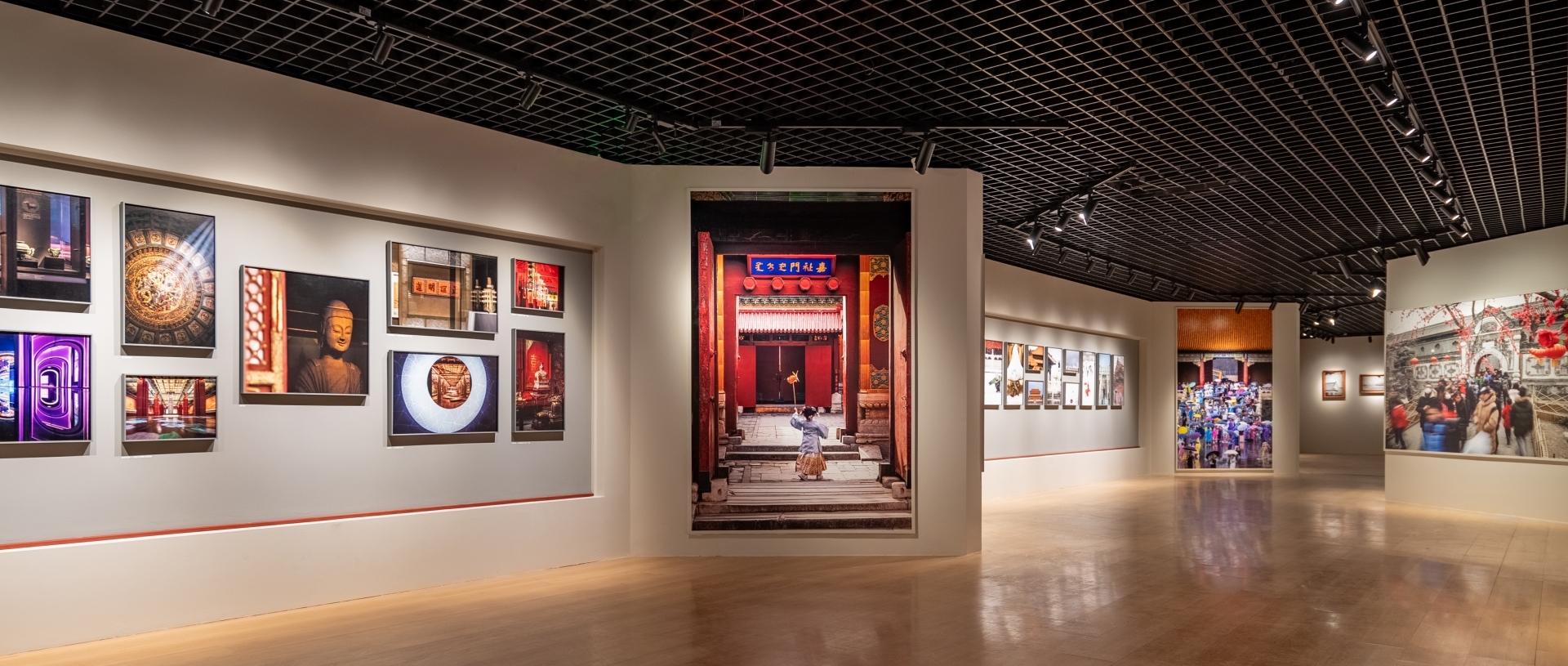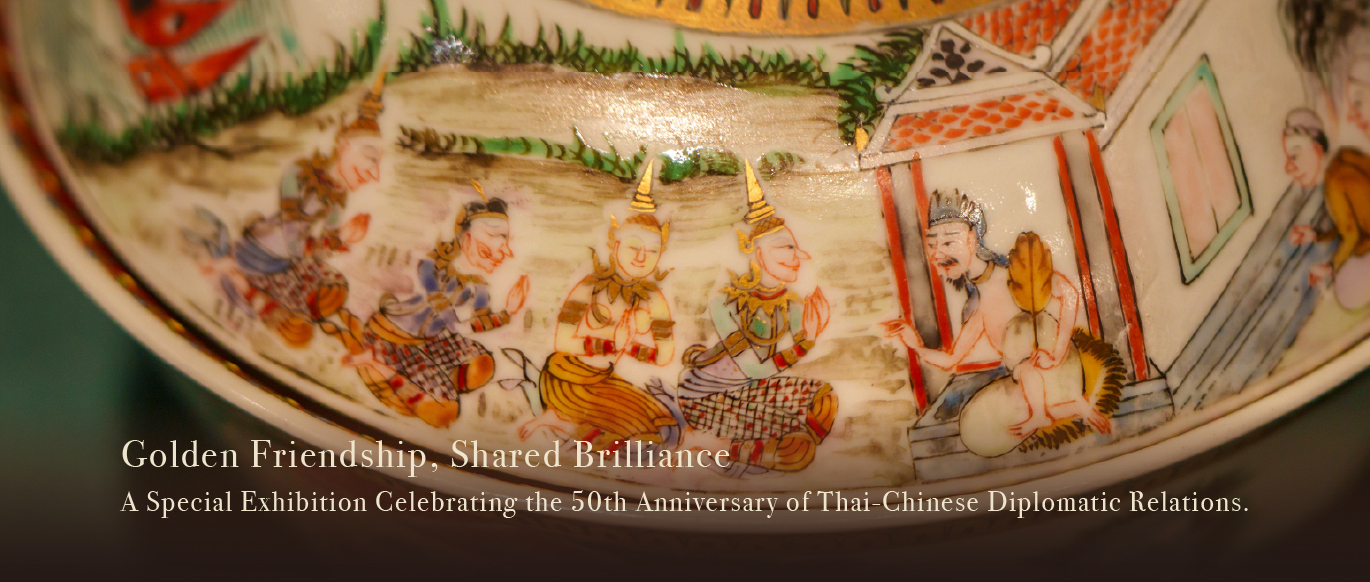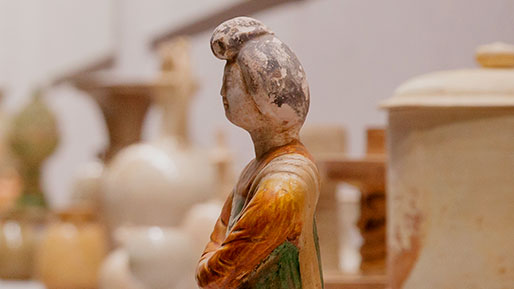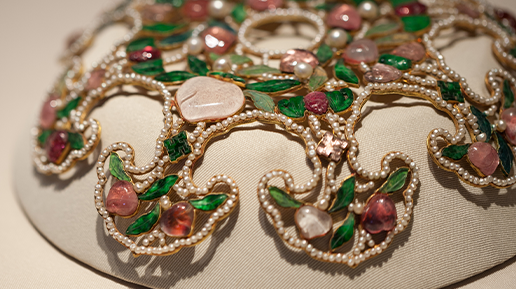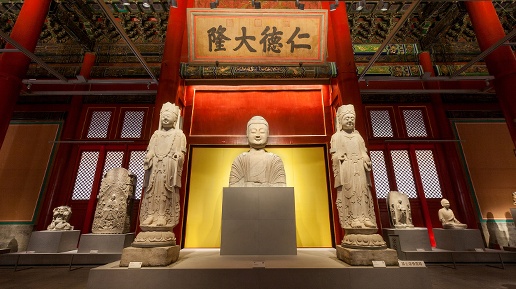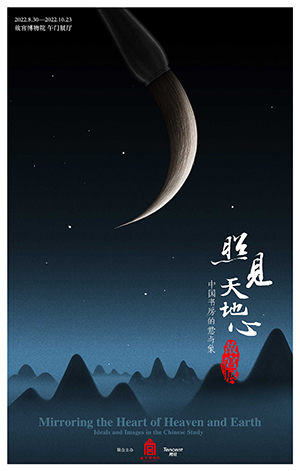
On August 29, the opening ceremony of an exhibition titled “Mirroring the Heart of Heaven and Earth—Ideals and Images in the Chinese Study” was held in the Palace Museum. Wang Xudong, a member of the Party Leadership Group of the Ministry of Culture and Tourism and director of the Palace Museum, Wang Chunfa, director of the National Museum of China, Zheng Xinmiao, former Chinese Vice Minister of Culture and former director of the Palace Museum, Du Haijiang, Party secretary and deputy director of the Palace Museum, Wang Dongbo, deputy director of the National Library of China, Feng Nai’en, director of Prince Kung’s Mansion Museum under the Ministry of Culture and Tourism, Su Dan, deputy director of China National Arts and Crafts Museum under the Chinese National Academy of Arts, Peng Gang, vice president of Tsinghua University, Liu Chen, deputy dean of the School of Arts at Peking University, Wu Hongliang, president of Beijing Fine Art Academy, Li Tianliang, editor-in-chief of Tencent News, and other leadership members of the Palace Museum attended the event. Lou Wei, executive deputy director of the Palace Museum, presided over the opening ceremony.
Chinese culture grew and prospered while being passed down from generation to generation for millennia to become as profound as it is today. The Chinese nation shaped a distinctive spiritual world and understanding of the universe. In ancient China, the study was not only a venue for reading, writing and collecting books, but also epitomized cultural inheritance and prosperity. This exhibition, focused on the “Ideals and Images in the Chinese Study,” aims to explore and explain the cultural core of the Chinese study and give this traditional facility fresh meaning of contemporary times. Specifically, it aims to increase cultural literacy and inspire love for the country by reflecting on the present by looking back at the past.
Chinese President Xi Jinping once noted, escorting Chinese culture into the future is by no means a simple throwback to the past or a blind exclusion of foreign things, but requires making the past serve the present and ensuring foreign additions serve China while using a critical approach to determine the efficacy of new ideas. The work requires breaking new ground to redeploy basic rules and norms from the ancients.
The Palace Museum, which upholds openness and cooperation while maintaining commitment to creative transformation and innovative development of Chinese culture, worked with technology company Tencent and dozens of contemporary artists for two years to organize this exhibition to highlight and pay tribute to traditional Chinese culture.
Contemporary artists enamored with fine traditional Chinese culture commonly seek to create inspiring and trendy works that nurture spirit of the times by delving into civilization with a history of 5,000 years and translating its outcomes into modern life.
Organizers from the Palace Museum and Tencent selected artists according to their perceived comprehension of traditional Chinese culture and artistic attainments based on how well previous works creatively interpreted the essence of traditional painting, calligraphy, housewares, and architecture. Their past contributions to the communication of fine traditional Chinese culture was another gauge.
A single exhibition could never gather all the outstanding Chinese artists all over the world. The Palace Museum plans to invite more scholars and artists from around the world to carry out exchanges and cooperation in various fields and forms, and this exhibition serves as an early attempt to pool diverse participants. By offering a mere glimpse at constantly developing fine traditional Chinese culture, the Palace Museum aims to demonstrate the significance and value of Chinese civilization to the world through constant exchange and inheritance—that is ongoing—to shed more light on the Chinese spirit in the new era. “Mirroring the Heart of Heaven and Earth” refers to inheriting the spirit expressed in the sentence “To ordain conscience for Heaven and Earth, to secure life and fortune for the people, to continue the lost teachings of past sages, and to establish peace for all future generations.”
Li Tianliang, editor-in-chief of Tencent News, noted in his remarks on behalf of Tencent that the company provided technological and operational support to develop systematic content promotion methods and channels to help with content communication throughout the curation process.
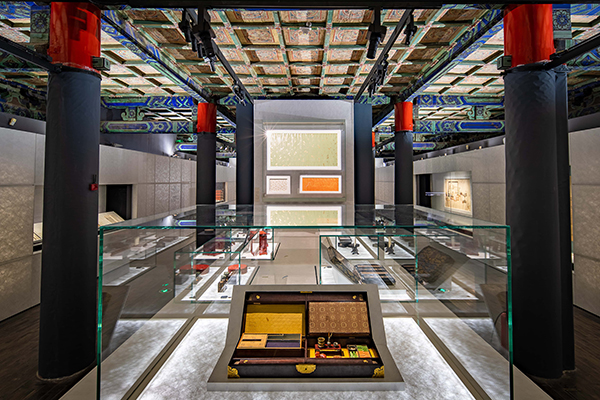


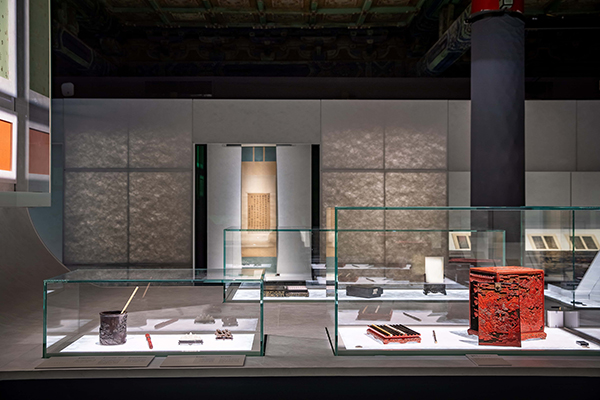
![]()
The exhibition “Mirroring the Heart of Heaven and Earth—Ideals and Images in the Chinese Study” opened on August 30 at the Meridian Gate (Wu men) gallery of the Palace Museum and will last through October 23, 2022. According to curator Wang Zilin, also head of the Research Administration Department of the Palace Museum, the exhibition was arranged in three sections: The first, “Vision Beyond Books,” includes five parts, namely, Starry Sky, Room of Five Classics, Books, Four Treasures of the Study, and Traditional Wares of the Literati. Radiating from the Room of Five Classics and Books, this section conveys the idea that the study symbolizes vision and cultural inheritance alongside serving as a space for reading, writing, and collecting books. The Starry Sky part, which connects the Constellation of Wall (which is considered a celestial library) to the famous Lubi Wall once used to protect ancient books from destruction in Confucius’ residence in Shandong Province, seeks to inspire reflections on the cultural significance of the study and imagination in terms of its spatial expansion. The Four Treasures of the Study part highlights the interdependency of literati and the Four Treasures (namely, ink brush, inkstick, paper and inkstone) to remind people of how ancient Chinese created so many distinctive Chinese calligraphy and painting masterpieces through masterly use of those tools. The Traditional Wares of the Literati part displays wares evidencing Chinese philosophies about the universe including jade articles, bronze wares, and porcelain pieces from five kilns of the Song Dynasty (960-1279).
The second section, “Morality and Responsibility,” highlights love for homeland and cultural pursuits demonstrated in the study. It includes three parts, namely, Self-cultivation, Love for Homeland, and Look into the Universe, which derive from the words explaining the purpose of reading and studying in ancient times—“self-cultivation, running one’s family well, governing the state properly, and bringing peace to all under heaven”. The Love for Homeland part features calligraphy from the Southern Song (1127-1279) and Ming (1368-1644) dynasties that expresses the noble pursuit of “being first to be concerned with state affairs and last to enjoy oneself.” On display are also a decorative hanging panel and a bronze musical instrument inscribed with words motivating the literati in the court to advocate virtues, uphold justice, avoid laziness, stay devoted, and pursue good for all.
The third section, “Bond with Nature,” includes two parts: Cold-weather Companions and Literati Gatherings. The three durable winter plants of pine, bamboo, and plum widely symbolize both the study and the literati in both physical and figurative terms. Considering the literati moved from the study to outdoors for gatherings, the Literati Gatherings part highlights another function of the study—facilitating communication between human and heaven—by exhibiting calligraphy and scroll paintings from the Song, Yuan (1271-1368), and Ming dynasties as well as drinking vessels and symbolic pillars found in pavilions during literati gatherings.
The third section also offers a technology-enabled immersive experience called “Fragrant Snow Study” (Xiangxue shufang) at its entrance, a new way for visitors to get to know the former study in the Forbidden City. Emperor Qianlong of the Qing Dynasty (1644-1911) built the study in the West Warm Chamber (Xinuan ge) of the Hall of Spiritual Cultivation (Yangxing dian) to imitate the Plum Chamber (Mei wu) of the Hall of Mental Cultivation, and piled white stones into a hilly landscape to create an ambience in which people could absorb the vastness of the universe by appreciating a vast expanse of snow-like plum flowers. By applying technologies like naked-eye 3D and somatosensory interactive projection, the exhibition immerses visitors in an authentic Fragrant Snow Study.
Visiting Tips:
The exhibition “Mirroring the Heart of Heaven and Earth—Ideals and Images in the Chinese Study” is scheduled to close on October 23, 2022. It is housed in the Meridian Gate gallery of the Palace Museum. Admission is included with a general Palace Museum ticket, but reservations in advance are required. Daily visitation is limited to 3,000 reservations in compliance with epidemic prevention and control requirements, and reservation closes when all daily slots are filled. Visitors can book Palace Museum tickets and admission to its exhibitions by uploading ID information via the WeChat applet of the Palace Museum. Visitors need to show proof of a negative COVID-19 PCR test taken within 72 hours, a green health code, the ID used to purchase the ticket, and go through temperature check before entering the Palace Museum.
For those seeking more knowledge about the exhibits who are unable to visit in person, the Palace Museum offers multiple online visiting options: a digital panoramic exhibition hall, an audio-visual navigation system, a high-definition exhibit guide applet, a short video series on exhibits, and several other channels for presenting multi-dimensional details.
An eponymous album documenting the exhibition “Mirroring the Heart of Heaven and Earth—Ideals and Images in the Chinese Study” has already been published and is now available for purchase at the Tmall flagship store of the Forbidden City Publishing House.



